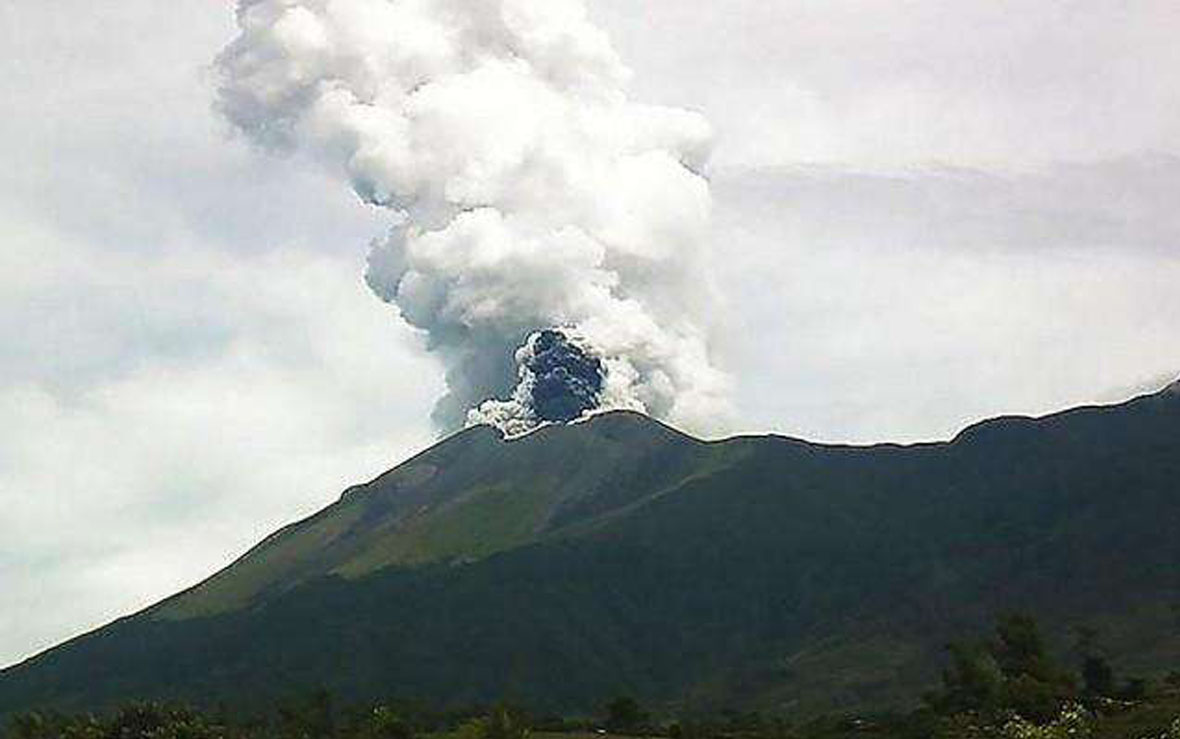NEGROS OCCIDENTAL- MULING naglabas ng abiso ang Philippine Institute of Volcanology and Seimology (PHIVOLCS) matapos tumaas na naman ang sulfur dioxide gas flux sa Kanlaon Volcano.
Ang emisyon ng sulfur dioxide (SO2) mula sa summit crater ng Kanlaon ay batay sa mga Flyspec measurements nitong Martes.
Umabot ito sa average na 5,083 tonelada kada araw.
Ito ang pangalawang pinakamataas na emisyon mula sa bulkan na naitala ngayong taon at ang pangatlo mula nang magsimula ang instrumental gas monitoring.
Bago ang pagputok noong ika-3 ng Hunyo 2024, ang Kanlaon ay naglalabas ng mas mataas na konsentrasyon ng volcanic sulfur dioxide gas sa average na 1,273 tonelada kada araw, ngunit simula noon ay lalo itong tumaas sa kasalukuyang average na 3,254 tonelada kada araw.
Bukod dito, patuloy ang volcanic earthquake activity sa average na 10 events kada araw mula nang sumabog ang bulkan.
“The public is reminded that Alert Level 2 (increasing unrest) prevails over Kanlaon. This means that there is current unrest driven by shallow magmatic processes that could eventually lead to explosive eruptions or even precede hazardous magmatic eruption at the summit crater. The public is strongly advised to be vigilant and avoid entry into the four kilometer-radius Permanent Danger Zone to minimize risks from volcanic hazards such as pyroclastic density currents, ballistic projectiles, rockfall and others, ” ayon sa Phivolcs.
Ang data mula sa electronic tilt measurements ay nagpapakita ng medium-term inflation sa Kanlaon edifice mula Marso 2022 at short-term inflation sa eastern flank mula 2023 na nagpapahiwatig ng mabagal ngunit patuloy na pagtaas ng presyon sa loob ng bulkan.
Ang kabuuang monitoring parameters ay nagpapahiwatig na ang mga proseso sa ilalim ng bulkan ay maaaring sanhi ng kasalukuyang aktibidad, na nagdudulot ng patuloy na mataas na konsentrasyon ng volcanic gas emission, pamamaga ng edifice, at paminsang volcanic earthquake activities. EVELYN GARCIA









